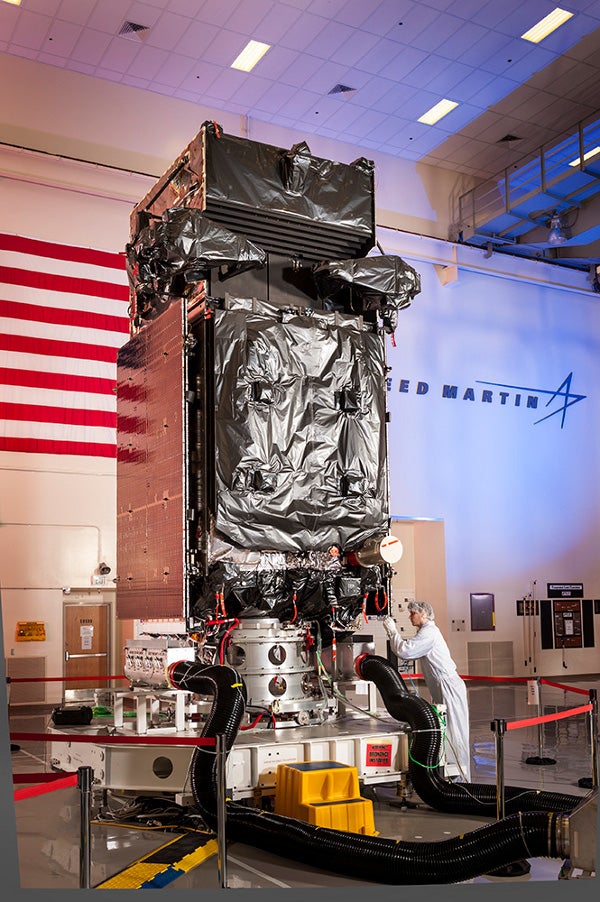
Lockheed Martin has handed over the second geosynchronous earth orbit (GEO-2) space-based infrared system (SBIRS) satellite to the US Air Force (USAF).
The satellite is scheduled to be launched onboard a United Launch Alliance Atlas V rocket from Cape Canaveral Air Force Station in Florida, US, in March 2013.
Lockheed Martin Overhead Persistent Infrared (OPIR) mission area vice president Jeff Smith said the company has completed a disciplined integration and test campaign for GEO-2, and is now looking to its launch that will provide the US and allies with enhanced global, persistent infrared surveillance capabilities.
”As we continue to produce SBIRS assets, we expect to drive even greater efficiency into our operations to reduce costs for the government, while still ensuring mission success,” Smith added.
Lockheed engineers are scheduled to complete post shipment testing and fuel the satellite’s propulsion system, besides encapsulating the spacecraft inside the launch vehicle’s payload fairing, prior to lift-off.
The fairing is then expected to be mated atop the Atlas V launch vehicle for final integrated testing and closeout preparations for the launch.
How well do you really know your competitors?
Access the most comprehensive Company Profiles on the market, powered by GlobalData. Save hours of research. Gain competitive edge.

Thank you!
Your download email will arrive shortly
Not ready to buy yet? Download a free sample
We are confident about the unique quality of our Company Profiles. However, we want you to make the most beneficial decision for your business, so we offer a free sample that you can download by submitting the below form
By GlobalDataThe company claims to have enhanced efficiency in the GEO-2 assembly, integration and testing processes, in addition to lowering the time required for similar activities by 30%.
SBIRS satellites are designed to provide timely and accurate warnings for missile launches to the US Government, using a combination of four GEO satellites, two highly elliptical earth (HEO) payloads and related ground hardware and software.
With production contracts for four HEO payloads and four GEO satellites, Lockheed has started initial work on the GEO-5 and GEO-6 satellites.
The SBIRS GEO-1 spacecraft was launched on 7 May 2011, while the GEO-3 and GEO-4 are currently in various stages of production.
Image: Lockheed engineers complete final preparations on SBIRS GEO-2 satellite prior to its delivery in Sunnyvale, California, US. Photo courtesy of copyright Lockheed Martin Corporation©.



